 Hot Topics - Chemical View: 10-Jan-2025
Hot Topics - Chemical View: 10-Jan-2025
Chemists created a novel potential antidote for hydrogen sulfide poisoning

Hydrogen sulfide (H2S) is an extremely toxic gas, can cause hypoxia and lead to death. Its toxicity is just next to carbon monoxide (CO). For workers who need to do their jobs in environments such as sewerage systems and mines, it poses severe risks.
Its extremely high toxicity is a result of its strong binding affinity to the haem-containing enzyme (cytochrome c oxidase), which is essential for maintaining cellular aerobic respiration. If disrupted, cellular aerobic respiration cannot be continued and this will lead to hypoxia and even death.
Scientists found that a man-made molecular assembly of iron porphyrin complex had a very high affinity for hydrogen sulfide under normal physiological conditions – almost 10 times higher than that of human haemoglobin. The compound is able to break down H2S into nontoxic sulfite (SO32-) and sulfate ions (SO42-) after radical reactions with oxygen. They had tested on mice and gave very promising results and showed good biocompatibility. It is proposed that a similar mechansim should allow structurally similar metal complexes to work as an antidote to multiple gaseous poisons including carbon monoxide (CO), hydrogen cyanide (HCN) and hydrogen sulfide (H2S).
* ChemistryWorld First potential antidote for hydrogen sulfide poisoning created 
 Hot Topics - Chemical View: 2-Nov-2023
Hot Topics - Chemical View: 2-Nov-2023
Reawakening of Small-molecules Drug Development

Some years ago, small-molecule drugs seemed at risk of going out of fashion, as industry began to favor biotherapeutics. But over the past 10 years, according to FDA statistics, it demonstrated that small molecules are not going away.
New classes of molecules, such as proteolysis-targeting chimeras (PROTACs) and molecular glues, arise and are new exciting fields. Also, new technologies, such as machine learning and generative artificial intelligence (genAI), are fueling a new drive in drug discovery.
Owing to these new classes of molecules and new technologies, drug companies are more ambitious and willing to invest in synthesizing compllicated molecular targets, by either using new chemical technology or novel technology-assisted chemistry. And that makes it an exciting time for chemists.
Some new possibilities are opened up -- such as covalent inhibitors and induced-proximity molecules. These molecules go beyond the lock-and-key approach to targeting unwanted proteins.
* C&EN Is this a golden age of small-molecule drug discovery? 
* C&EN Why small-molecule drug discovery is having a moment 
* the Medicine Maker A Reawakening of Small Molecule Drug Development: New technologies are driving a small molecule renaissance
 Hot Topics - Chemical View: 18-Aug-2023
Hot Topics - Chemical View: 18-Aug-2023
Really Miraculous Chemistry! How about Tranforming Flies into Degradable Plastics?!
Can you magine, one day, insects are used as a source of chemicals to make plastics that can biodegrade later?
Chemistry researchers present their results at a meeting, they develop methods "to transform natural products — such as glucose obtained from sugar cane or trees — into degradable, digestible polymers that don’t persist in the environment". An alternative source of natural product can be obtained from insects such as flies. The main components of dead flies are chitin - a type of polymer made up of glucosamines. These small sugar molecules will then be used to make bioplastics, such as polycarbonates or polyurethanes, which are traditionally made from petrochemicals.
A student, who participated in the project, archored carboxylic acid groups to the chitosan molecules and made the insoluble material into an emulsion. Then, the modified chitosan emulsion were cross-linked through amide and ester linkages, by adding chemical reagents such as a carbodiimide. The resulting hydrogel can soak up a large volume of water in about a minute.
The products made from these chemical building blocks can degrade or be digested, so they won’t contribute to any plastic pollution problem.
* Eureka Alert Tranforming Flies into Degradable Plastics 
* C&EN Chemists make degradable plastics from flies 
 Hot Topics - Chemical View: 14-July-2023
Hot Topics - Chemical View: 14-July-2023
Cosmetic Ingredients and their Chemical Principles
美容正道,化學教路 —— 化妝品的成分與化學原理

美容是一門科學,化學家在實驗室埋頭研究材料、開發配方和檢驗成品,務求解決世界上各種與美容有關的難題。隨著化妝品市場越趨可觀,現今的化妝品種類林林總總,除了彩妝外,更有護膚、護髮、口腔護理、指甲護理、香水等產品。
使用含有太多化學物質的化妝品,會對人體有害?
天然、有機、無添加、無防腐劑的化妝品必定對人體無害?
油膩又有頭皮屑的頭髮,如何才能回復清爽乾淨?
臉妝、眼妝和唇妝如何使人更亮眼奪目?
皮膚出油嚴重,更會發炎形成暗瘡,需要深層清潔嗎?
祛斑美白產品如何解決黑色素問題?要配合防曬產品嗎?
皮膚乾燥缺水,單是補水並不足夠,還要「鎖住水分」?
夏天出汗有異味,怎樣才能減少尷尬情況?香水又如何助人散發迷人香氣?
指甲油對手指甲和腳趾甲有害嗎?
飽餐過後,如何保持牙齒潔白和口氣清新?
我們每天都會把化妝品塗到肌膚上,卻甚少留意這些瓶瓶罐罐背面的產品標籤,上面的化學成分列表你能讀懂多少呢?你又了解化妝品背後的化學原理嗎?
This is a new book written for general public and high school students. Based on everyday life experience, using perspective of a chemist, how cosmetic products work for us and how cosmetic products can be used in appropriate ways? There are many misunderstanding and rumours about cosmetics. That's why we need to explore using a scientific viewpoint!
* HKTV mall HKTV Mall 泛華發行代理有限公司 - 花千樹出版 - 美容正道,化學教路 
* 花千樹出版 Arcadia Press 美容正道,化學教路 —— 化妝品的成分與化學原理 
 Hot Topics - Chemical View: 12-Jan-2022
Hot Topics - Chemical View: 12-Jan-2022
Chemists invented a shortened synthesis of molnupiravir (an antiviral drug against COVID-19)
Molnupiravir kills SARS-CoV-2 in cells and is currently in clinical trials to test its effectiveness at fighting COVID-19 in people. Originally developed to treat influenza, molnupiravir works by causing viruses to make errors when copying their own RNA, introducing mutations that inhibit replication. Recently, interim phase 3 clinical trial findings indicated that molnupiravir reduced the risk of hospitalization and death from COVID-19 for newly diagnosed, at-risk patients, and that it worked equally well against different SARS-CoV-2 variants.
Chemists from Merck developed a faster route. With the help of an enyzme, they convert ribose’s primary alcohol into an iso-butyl ester. They then use a novel biocatalytic cascade reaction to install uracil at the appropriate position on the sugar. Finally, they selectively convert one of the uracil moiety’s carbonyls to an oxime, creating molnupiravir.
The new, three-step route, as reported, should make it easier to make large supplies of the compound. Each step occurs in over 95% yield and only utilizes widely available commodity reagents and simple operations. Compared to the initial route, the new route is 70% shorter, and approximately 7-fold higher in overall yield.
* Bethany Halford,
Chemists shorten the synthesis of molnupiravir to prepare for scale-up C&EN,5-Jan-2021, 99(1). 
* Tamas Benkovics et al,
Evolving to an Ideal Synthesis of Molnupiravir, an Investigational Treatment for COVID-19 ChemRxiv ,2020. 
* ACS Central Science,
A quick, high-yield synthesis of molnupiravir, an investigational COVID antiviral pill ACS News Service Weekly PressPac: November 03, 2021. 
 Hot Topics - Chemical View: 25-May-2021
Hot Topics - Chemical View: 25-May-2021
Polypeptide organic radical batteries
In recent decades, lithium-ion battery technologies has enabled the proliferation of portable devices and electric vehicles, with substantial benefits for society. However, the rapid growth in technology has highlighted the environmental challenges of mining lithium, cobalt and other mineral ore resources, and the issues associated with the disposal of batteries.
One of the potential solutions is the development of fully organic-based redox-active materials, and their application into rechargeable batteries. This can imply the degradation products should be either environmentally benign or recyclable for reconstruction into a new organic-based battery.
Researchers at Texas A&M University have built a battery that is metal-free and uses an organic polypeptide backbone for its electrodes. The scientists can degrade the electrodes with acid into amino acids for potential reuse. The team started with polypeptide chains. Then they attached 2,2,6,6-tetramethyl-4-piperidine-1-oxyl radicals (yes, they are radicals) to make the cathode and methylated 4,4′-bipyridine derivatives to make the anode. A radical-based mechanism enabled the electrons to shuttle between the two electrodes and thus make this battery rechargeable.
* Tan P. Nguyen et al. Polypeptide organic radical batteries Nature,5-May-2021, 593, pages 61–66. 
 Hot Topics - Chemical View: 12-Jan-2021
Hot Topics - Chemical View: 12-Jan-2021
Boundary bewteen a hydrogen bond or a covalent bond

Using spectroscopic experiments and computer simulations, new research suggests that the line between a hydrogen bond and a covalent bond is blurrier than most chemistry textbooks suggests.
A shorter hydrogen bond, for instance, indicates stronger hydrogen bonding and a relatively weaker covalent bond. This was reflected, as expected, in lower spectroscopic frequencies for the H–F bond.
But, when a hydrogen shared equally between the two fluorines, when the H-F distance shortened, the strength of the covalent bond increased. So it is best described in chemistry textbook terms as a covalent bond.
* Sam Lemonick Where the hydrogen bond ends and the covalent bond begins. C&EN,7-Jan-2021. 
 Hot Topics - Chemical View: 24-Sept-2020
Hot Topics - Chemical View: 24-Sept-2020
Possible Chemotherapy for COVID-19

Pfizer has initiated clinical trial for a novel chemical compound called PF-07304814. It is a compound targeting an enzyme that 2019nCoV uses to organize and multiply a crucial protease (called 3CL protease). In an attempt to disrupt the coronaviruses’ ability to self-replicate and multiply, PF-07304814 is the first antiviral drug to target this protein. This new molecular antiviral could possibly enhance the use of other antiviral, e.g. remdesivir.
PF-07304814 contains a phosphate group attached at one end. This can make the compound soluble in water and, when adminitered, this group will be cleaved by phosphatase enzymes in human tissues, thus releasing the active antiviral in vivo.
* Bethany Halford Pfizer’s novel COVID-19 antiviral heads to clinical trials. C&EN,17-Sept-2020. 
 Hot Topics - Chemical View: 17-May-2019
Hot Topics - Chemical View: 17-May-2019
How Hair Dyes Go High-Tech?
Most commercial hair dyes have the disadvantage of being potentially irritating and smelling to some level. Some newer formulations still contain chemicals that could be toxic to the environment when disposed. Graphene, which is a two-dimensional arrangement of carbon atoms, is becoming a more popular component in many industrial applications.
Recently, chemists have found a breakthrough using graphene. They successfully created a graphene-based hair dye that can be brought to the market and have a range of shade and color. It is apparent that graphene oxide particles cannot be absorbed into the skin as with conventional hair dyes, since the molecular size of the graphene derivatives are so large. Hence, it may turn out that this this class of hair dye will be safer to use in the future.

* Luo C., Zhou L., Chiou K., Huang J. Multifunctional Graphene Hair Dye. Chem, 2018. Pages 784-794. 
* Morris A. Graphene finds new application as non-toxic, anti-static hair dye. EurekAlert,15-Mar-2018 . 
* Kira Welter High-Tech Hair Dye: Graphene As A Potential Non-Toxic Hair Colorant. Evolving Science 
 Hot Topics - Chemical View: 1-Sept-2018
Hot Topics - Chemical View: 1-Sept-2018
Alkaline earth metals break the octet rule
In high school chemistry curriculum, it is mentioned that all main group elements will behave according to the octet rule. However, recently a few chemists found that Ca, Sr and Ba could adopt a transition metal-like 18-electron configuration, rather than the octet.
Elements are classified into main group elements, which include the s- and p-blocks of the periodic table, transition metals (d-block) and lanthanides and actinides (f-block). As main group element will normally form bonds only using their s and p valence orbitals. So a total of 8 electrons can be fitted into the orbitals. And this is the origin of the octet rule.
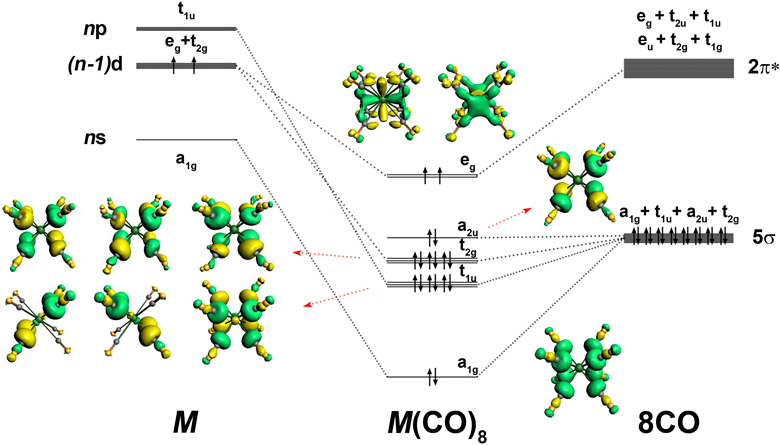
* Xuan Wu, Lili Zhao, Jiaye Jin, Sudip Pan, Wei Li, Xiaoyang Jin, Guanjun Wang, Mingfei Zhou, Gernot Frenking Observation of alkaline earth complexes M(CO)8 (M = Ca, Sr, or Ba) that mimic transition metals Science 2018 
 Hot Topics - Chemical View: 1-March-2018
Hot Topics - Chemical View: 1-March-2018
Antimalarial plant's pigment catalyses lab synthesis of antimalarial
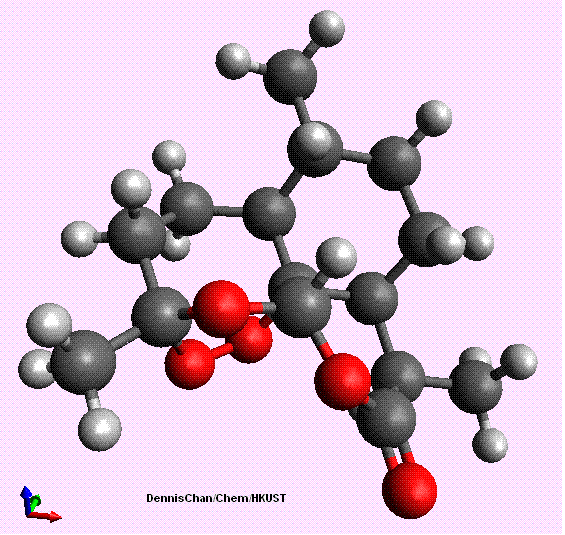
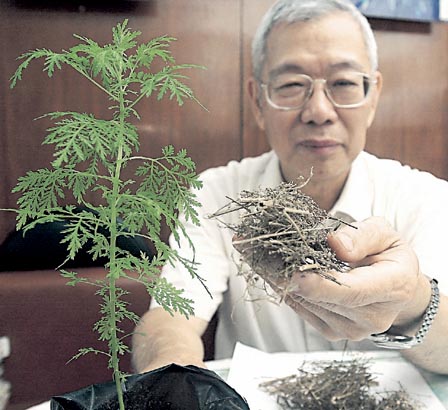
Every year, over 200 million people are infected with malaria. The gold-standard drug to treat this are artemisinin derivatives. Artemisinin is a compound isolated from a wormwood plant called Artemisia annua. The phaarmacological activity relies on the endoperoxide bridge, which selectively damages the malaria parasites that cause the illness. However, the production of artemisinin nowadays mainly depends on cultivating the plant. Scientist has been working on finding more efficient alternative methods - such as a total organic synthesis or a semi-synthesis.
Chemists have developed a semi-synthetic process to make artemisinin using continuous flow photochemistry years ago. Although this approach solved a main challenge in artemisinin synthesis – the production of singlet oxygen to generate the endoperoxide bridge on the artemisinin skeleton – it required the addition of a photosensitive dye to the pure precursor. Now, chemist replaces this artificial catalyst with the plant’s own chlorophyll.
The green colored pigment makes the organic synthesis of an important anti-malarial, artemisinin, more efficient and cheaper.
* Kira Welter Antimalarial plant's chlorophyll catalyses drug synthesis. ChemistryWorld - 1 MARCH 2018 
* Susan Triemer et al., Literally green chemical synthesis of artemisinin from plant extracts. Angew Chem Int Ed 2018 DOI: 10.01002/anie.201801424 
 Hot Topics - Chemical View: 24-Feb-2018
Hot Topics - Chemical View: 24-Feb-2018
HKUST Team Proposes Solutions for Sustainabale Transportation - Championship in HK Chem Olym 2018
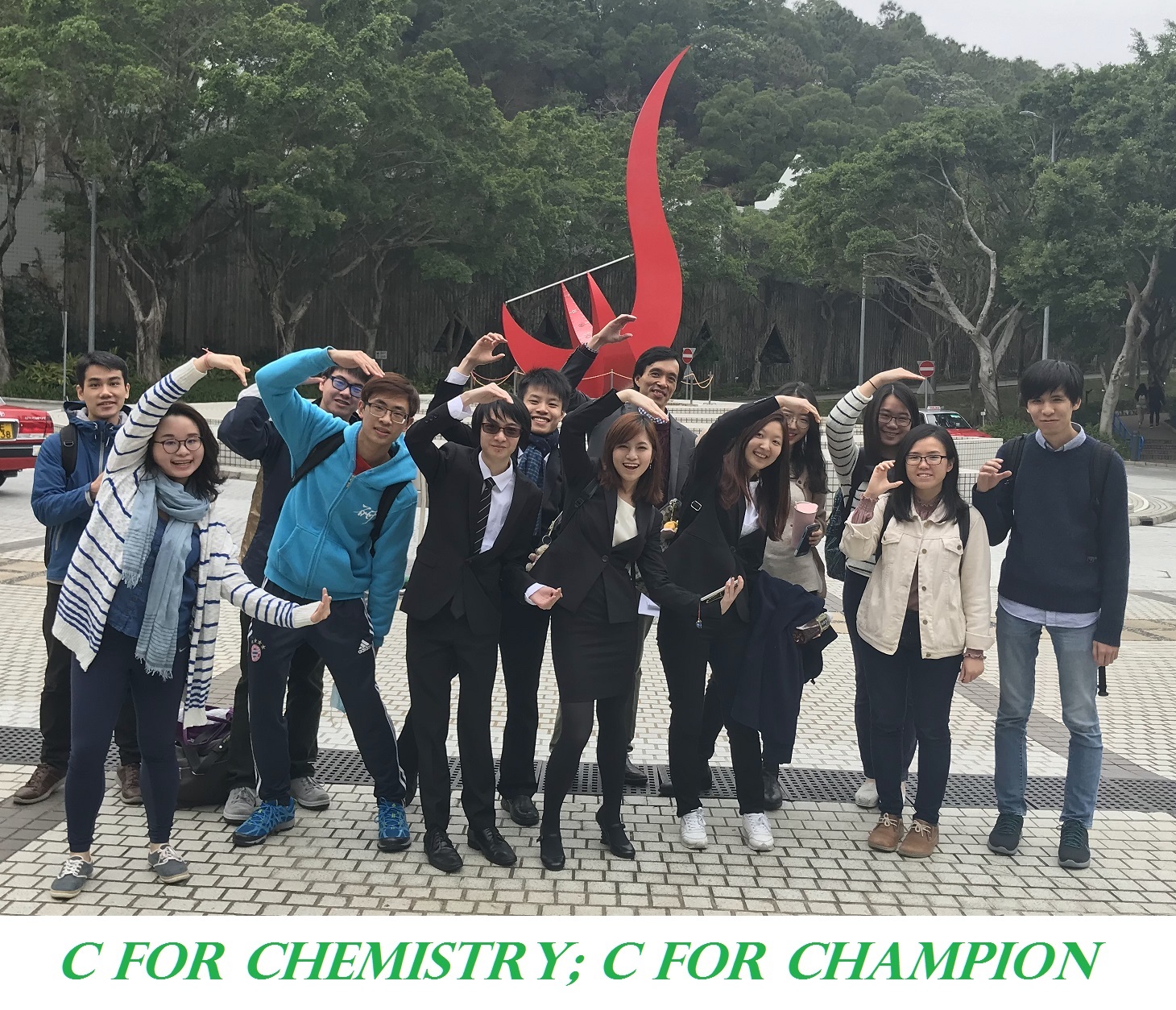
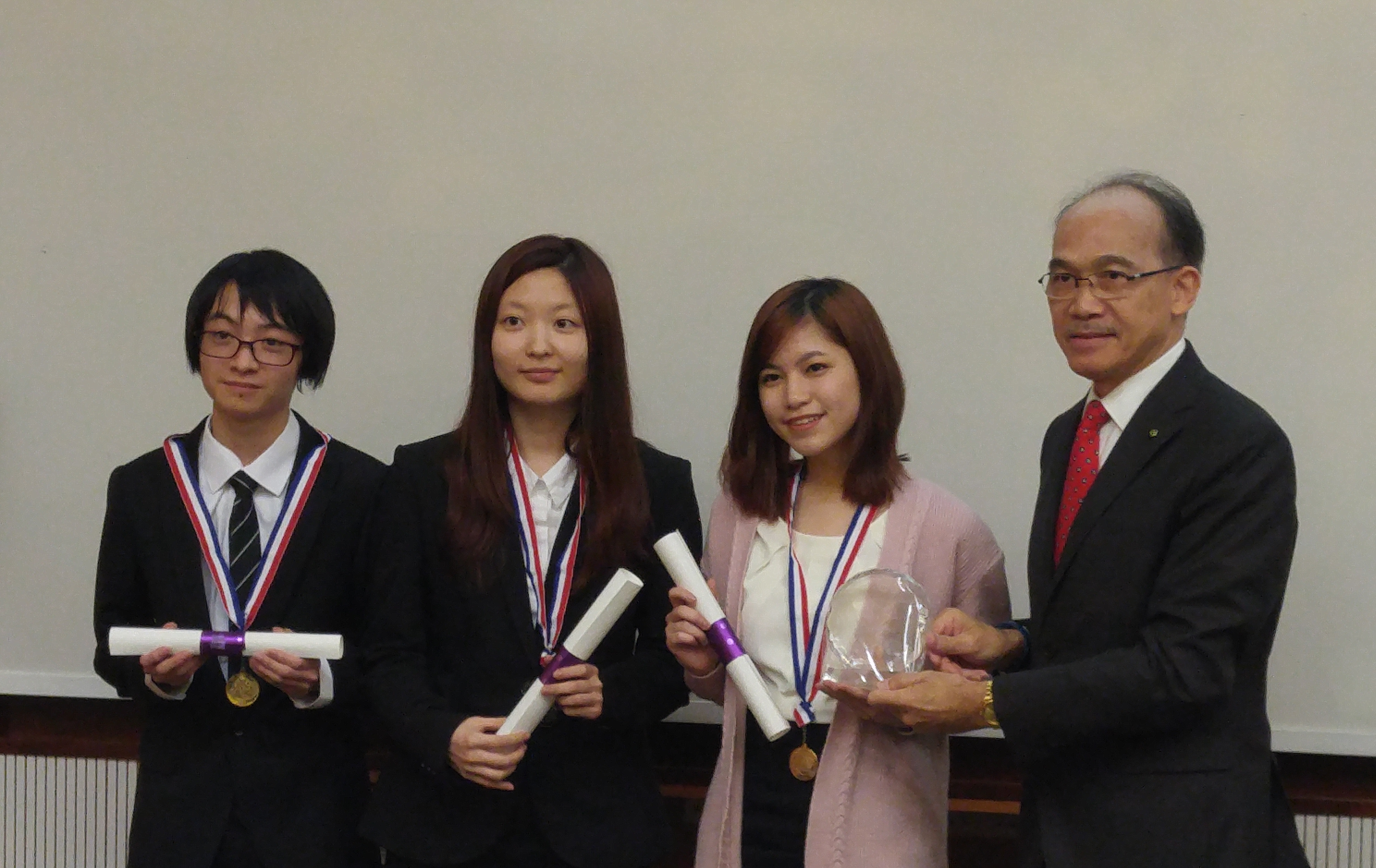
Hong Kong Chemistry Olympiad is an annual competition organised by the Hong Kong Chemical Society and the Royal Society of Chemistry to promote students' interest in Chemistry. Teams from six tertiary institutions had to work out the best solutions to given some chemistry problems.
The HKUST team explored and explained to the judges from HK's Universities how chemists could completely get rid of reliance on energy derived from fossil fuels. Our team suggest solutions for synthesis of novel materials that can harvest solar energy and to store the energy on organic carriers in an innovative way - paving the road to a totally sustainable way of energy consumption for transportation.
With the excellent performance of our representatives, Cheryl, Olivia and Matthew, together with the supports from peer students, the HKUST team with their strong team spirit amongst classmates grasped the champion medals. The Guest of Honour who passed the champion trophy to the HKUST team was Mr Jimmy Kwok (BBS, MH, JP Chairman, Federation of Hong Kong Industries) in 29th HK Chemistry Olympiad on 24-Feb-2018.
 Hot Topics - Chemical View: 10-Sept-2017
Hot Topics - Chemical View: 10-Sept-2017
Stable Radical in Interlocked Molecules
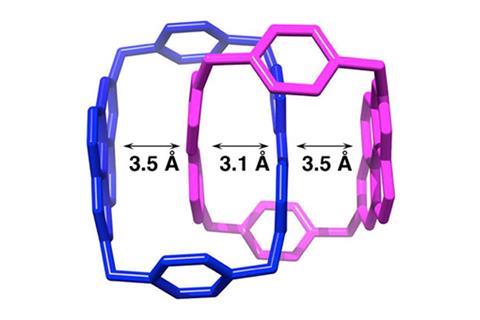
Catenanes are molecules consisting of two interlocked rings. Now this kind of molecules are made into the first examples of a new class of stable radical.
Although most molecules with unpaired electrons are highly reactive and short-lived, there are some radicals that can be stable for days or even years. Its stability depends on the molecular design. Some of these well-designed molecules with resonance stabilization can become persistent radicals.
The catenanes produced by J. Sun and coworkers have shown several different oxidation states. This makes them promising for applying in switchable computing components.
* Katrina Krämer Interlocked Molecules Encircle Stable Radicals. ChemistryWorld - 7 SEPTEMBER 2017 
* Junling Sun, Zhichang Liu, Wei-Guang Liu, Yilei Wu, Yuping Wang, Jonathan C. Barnes, Keith R. Hermann, William A. Goddard III, Michael R. Wasielewski and J. Fraser Stoddart Mechanical-Bond-Protected, Air-Stable Radicals. J Am Chem Soc JACS 2017 
 Hot Topics - Chemical View: 10-Sept-2017
Hot Topics - Chemical View: 10-Sept-2017
Mimicking Photosynthesis & Converting Toxic Gas Molecules to Fuels
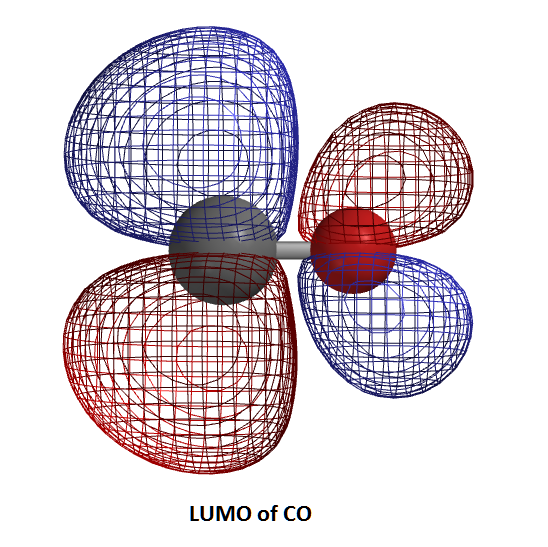
It seems to most people that oxides of carbon are bad guys - carbon dixoide (CO2) is ususally described as the chief culprit in global warming; carbon monoxide (CO) is a lethal gas. HOwever, CO is actually an energy-rich gas that can be comveniently used in heating and cooking in everyday life.
Chemists found a cheap new catalyst that showed a conversion process with record efficiency, using electricity from a solar cell to split CO2 into energy-rich carbon monoxide (CO) and oxygen. The conversion isn’t efficient enough to compete with fossil fuels like gasoline. But chemists are finding newer modification of methods for making liquid fuels from sunlight, water, and CO2.
* Robert Service Cheap catalysts turn sunlight and carbon dioxide into fuel Science - 6 June 2017 
 Hot Topics - Chemical View: 28-Feb-2017
Hot Topics - Chemical View: 28-Feb-2017
HKUST Team Explores Green Solution to Modern buildings - 1st runner-up in HK Chem Olym 2017

This year's topic assigned to us is 'Green Building' under the theme 'Chemistry for Environmental Protection'. Teams from six local tertiary institutions had to work out the best solutions to given some chemistry problems.The HKUST team explored how chemists could create smart materials that could allow us to build a greener building with reduced energy input, minimized pollutant emission and ability to capture renewable energy on its own.
With the excellent performance of our representatives, Tim, Dawn & Owen together with the supports from peer students, the HKUST team, with their strong team spirit amongst classmates grabbed the 1st runner-up medals from the guest-of-honor, Prof. Marcel Lie .
Hong Kong Chemistry Olympiad is an annual competition organised by the Hong Kong Chemical Society and the Royal Society of Chemistry to promote students' interest in Chemistry. Teams from six tertiary institutions had to work out the best solutions to given some chemistry problems.
 Hot Topics - Chemical View: 30-Jan-2017
Hot Topics - Chemical View: 30-Jan-2017
Molecular Design of Sunscreens by Learning from Nature.

Skin cancer incidence has been increasing in the last decades and many commercial formulations with molecular sunscreens are designed to protect against erythema caused by UV radiations. However, many of the active components present in sunscreens show weaknesses such as low stability and unacceptable toxicity. Thus, the development of more efficient components is an urgent public health issue and an attractive industrial target.
Microsporine-like amino acids (MAAs) are widespread in the microbial world, and are found in most prominently in marine algae and cyanobacteria. MAAs are small molecules derived from amino acids, thermally stable, and they absorb light in the ultraviolet region, protecting the microbial DNA from radiation damage. Inspired by this finding, recently some Spanish chemists made molecular sunscreens with increased photoprotective capacities and a new energy dissipation mechanism. Using these newly designed scaffolds, they have synthesized a series of compounds with tunable properties suitable for their use in sunscreens, and enhanced properties in terms of stability, light energy dissipation, and toxicity.
* Raúl Losantos, Ignacio Funes-Ardoiz, José Aguilera, Enrique Herrera-Ceballos, Cristina García-Iriepa, Pedro J. Campos, Diego Sampedro. Rational Design and Synthesis of Efficient Sunscreens To Boost the Solar Protection Factor. Angewandte Chemie International Edition, 2017 Angew Chem Int Engl 2017 
 Hot Topics - Chemical View: 6-Oct-2016
Hot Topics - Chemical View: 6-Oct-2016
Three chemists recognized for their work on mechanically interlocked molecules - Nobel Prize in Chemistry 2016
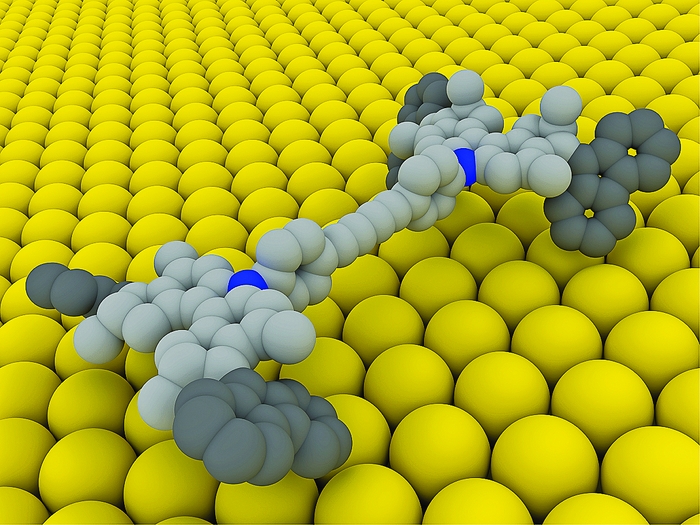
Chemists who envisioned and built machines on the molecular scale have won the 2016 Nobel Prize in Chemistry. The award will be shared equally between Professors Jean-Pierre Sauvage, J. Fraser Stoddart, and Ben L. Feringa for the design and synthesis of molecular machines. Molecular machines are single-molecules that behave much like the machines people encounter every day: They have controllable movements and can perform a task with the input of energy. Examples include a tiny elevator that goes up and down with changes in pH and a super-small motor that spins in one direction when exposed to light and heat. Many in the field speculate that molecular machines could find use in computing, novel materials, and energy storage.
“Chemistry is about creating objects and new things. This award recognizes chemists who make, model and measure. The Nobel Committee has recognized three people whose hearts and souls are in chemistry”, said Prof. Stoddart.
* Molecular machines garner 2016 Nobel Prize in Chemistry C and EN October 2016 
 Hot Topics - Chemical View: 28-May-2016
Hot Topics - Chemical View: 28-May-2016
"蠓" Biting Midges - How Chemistry Can Keep Them Away?



Swarms of small short-legged biting midge have been bugging many Hong Kong residents in the past few weeks. With the onset of the recent warm wet weather along south China coast, these tiny blood-eaters are absolutely annoying.
How we can stay away from these small creatures? Some studies indicated that DEET is more effective repellent than many other plant-derived essential oils. It is recommended to apply insect repellent to exposed skin and under the ends of sleeves and pant legs. The most effective repellents generally are those that contain the chemical DEET (N,N-diethylmetatoluamide).
DEET was not designed on a computer or derived from ancient folk medicine. In the 1950's, a massive screening was carried out in which all chemicals scientists could get their hands on were simply applied to volunteers' forearms, and the forearms were placed in chambers filled with hungry mosquitoes. DEET emerged as the best mosquito repellent, and has been used ever since. In 2008, scientists discovered that DEET binds to the olfactory receptors of mosquitoes, and interferes with their ability to detect normal human "scent" molecules. Thus, the mosquitoes do not land on human skin, because it does not smell like human skin to them.
Beside its chemical stability, the molecular architecture of DEET has the correct orientations for hydrogen-bond acceptor and donor sites as well as van der Waals binding. Thus, DEET inhibit odor-evoked currents mediated by the insect odorant receptor complex.
* "Bites, lesions and no open windows" - South China Morining Post 2016-5-23 
* Laboratory and field evaluations of chemical and plant-derived potential repellents against Culicoides biting midges in northern Spain - Medical and Veterinary Entomology, Dec 2014, 28, 421-431 
* Insect repellents with DEET best 'natural' alternatives in tests - WRAL.com - 24 May 2016 
* 蟲鼠資訊 : 蠓 - Food and Environmental Hygiene Dept 蟲鼠簡訊 [assessed on 27-5-2016] 
 Hot Topics - Chemical View: 28-Mar-2016
Hot Topics - Chemical View: 28-Mar-2016
Promising candidate for fighting Zika virus

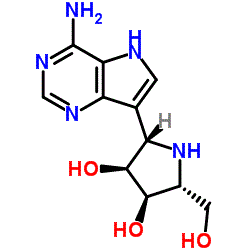
There is still no specific treatment or vaccine for the Zika virus infection, but a new drug being developed by a pharmaceuticals company is yielding promising results. Two doses of BCX4430 were tested against an oral antiviral called ribavarin and a placebo to figure out their effect on the survival of immune-deficient mice.
BCX4430 is a molecular inhibitor that has been found to be effective against more than RNA viruses in nine different families: togaviruses, coronaviruses, filoviruses, bunyaviruses, paramyxoviruses, arenaviruses and flaviviruses. The Zika virus is a flavivirus.
BCX4430 is an adenosine structural analogue that contains an aza-ribose moiety which can interfere the RNA replication of Zika viruses.
* Zika virus drug shows promise in mice study - Tech Times 2016-3-9 
 Hot Topics - Chemical View: 28-Feb-2016
Hot Topics - Chemical View: 28-Feb-2016
HKUST Team Fights against Drug-Doping in Sports - Championship in HK Chem Olym 2016

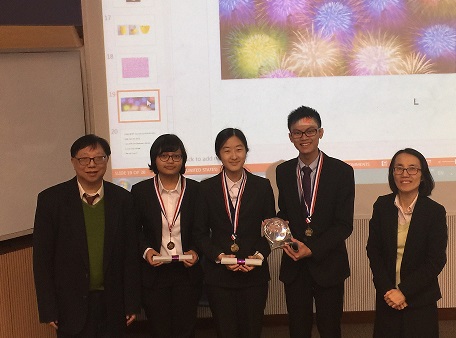
Hong Kong Chemistry Olympiad is an annual competition organised by the Hong Kong Chemical Society and the Royal Society of Chemistry to promote students' interest in Chemistry. Teams from six tertiary institutions had to work out the best solutions to given some chemistry problems.
The HKUST team explored the contribution of chemists in maintaining justice in sports and competitions and explained to the judges from HK's Universities how chemists could fight against drug-doping by making use of advanced technologies and sophisticated chemical analysis.
With the exellent performance of our representatives, Samantha, Teddy & Nadiya together with the supports from peer students, the HKUST team, with their strong team spirit amongst classmates grasped the champion medals. The Guest of Honour who passed the champion trophy to the HKUST team was Government Chemist, Dr. Della W. M. SIN, in 27th HK Chemistry Olympiad on 27-Feb-2016.
 Hot Topics - Chemical View: 6-Oct-2015
Hot Topics - Chemical View: 6-Oct-2015
Discovery leading to novel artemisinin-combination chemotherapy - Nobel Prize in Medicine 2015


The world needed a totally new structured antimalarial to deal with the drug resistance on malaria. She accepted the task and scoured ancient texts (e.g. 肘後備急方) and folk manuals and traveled to remote parts of the country for clues, ultimately collecting 2,000 potential remedies. Finally she succeeded in identifying an unusual organic compound isolated from Chinese herbs - artemisinin (qinghaosu,青蒿素) - which is a naturally occuring sesquiterpene peroxide.
Without the chemical knowledge on chemical stability, she almost missed the chance to identify this novel compound with completely new structure. Low temperature extraction techniques with unreactive organic solvents should be one of the breakthroughs that allowed her to isolate the peroxy compound without much loss by thermolysis. Her discovery resulted in the drug artemisinin - humankind's best defense against the mosquito-borne disease, which kills almost 450,000 people each year.
Further structural modification of the unusual chemical parent structure were investigated over years since then. More potent molecules with pharmaceutical values were synthesized according to rational design. Not only malaria, it was found that chemical analogs of artemisinin (e.g. artemisone) could be also effective in treating other parasitic and non-parasitic diseases.
* How the woman who won the Nobel Prize in Medicine saved millions of lives using ancient Chinese lore TECH Insider Science 2015-10 
* Lasker Award Interview with TU Youyou Lasker Award Official Site 
* Nobel Prize winner Tu Youyou combed ancient Chinese texts for malaria cure CNN 2015-10 
 Hot Topics - Chemical View: 26-July-2014
Hot Topics - Chemical View: 26-July-2014
Fish Bones can be Turned into Excellent Sunscreen

An effective new sunscreen based on iron-doped hydroxyapatite (HAp)-based materials derived from cod fish bones, a by-product of the food industry, has been developed by scientists in Portugal.
Commercial sunscreens are usually based on materials like TiO2 and ZnO, which absorb UV to reduce its harmful effects on the skin. However, there are concerns regarding the potential toxicity of these materials and their adverse environmental effects when they accumulate in water supplies.
Recently Portuguese chemists prepared a new sunscreen by treating cod fish bones with FeCl2 solution for three hours at 65–70 °C. The bones were then dried overnight and calcined at 700 °C for one hour, yielding a mixed material containing HAp, iron-substituted HAp and a small amount of hematite that absorbs UV radiation.Iron is key to the materials’ performance. The presence of
calcium iron hydrogen phosphate (Ca9FeH(PO4)7) increases
the absorption and extends it over the whole UV range.
* Cod Fish Bones offer five star sun protection Chemistry world 2014 July
* Hydroxyapatite-Fe2O3 based material of natural origin as an active sunscreen filter. J. Mater. Chem. B, 2014 
 Hot Topics - Chemical View: 26-Jun-2014
Hot Topics - Chemical View: 26-Jun-2014
What attracts mosquitoes to certain people and what can I do to repel them?
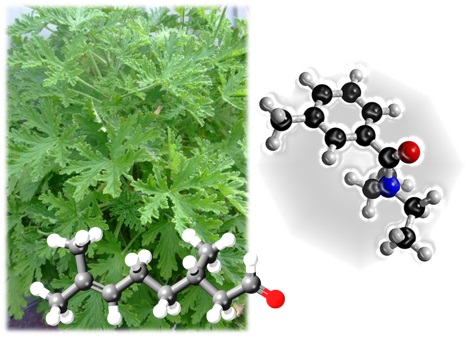
Experts try to crack the code behind why mosquitoes like some people more than others. Scientists do know that genetics account for a whopping 85% of our susceptibility to mosquito bites. They've also identified certain elements of our body chemistry that, when found in excess on the skin's surface, make mosquitoes swarm closer.
Any type of carbon dioxide is attractive, even over a long distance. Larger people tend to give off more carbon dioxide, which is why mosquitoes typically prefer munching on adults to small children. Pregnant women are also at increased risk, as they produce a greater-than-normal amount of exhaled carbon dioxide. Movement and heat also attract mosquitoes.
When you pant from exertion, the smell of carbon dioxide from your heavy breathing draws mosquitoes closer. So does the lactic acid from your sweat glands.
DEET can disable the mosquito's ability to smell and using DEET containing sprays is the most effective way to minimize bites. Bites can also be reduced by high concentrations of natural repelling compounds - specifically citronellal (from citronella plant), eucalptol and p-menthane-3,8-diol (chemicals from the eucalyptus plant).
One of the easiest way is to grow these mozzie-repellent plants at home such as citronella in your garden or yard to keep mosquitoes away. The plants can go directly in the ground behind your other plants and grow up to a height of 5 to 6 feet in large grassy clumps. Citronella contains citronellal, which is the repelling compound common to all the citrus family. Other common herbs such as mint, basil, rosemary, lemongrass and catnip can also help to repel mosquitoes as they can produce chemicals that mosquitoes will try to avoid.
Big sage (Lantana Camara L) is also a mosquito deterrent well documented in Tanzania. Its repelling power stems from the presence of particular molecules - terpines and alkaloids such as caryophylene, eucalyptol, alpha-humelene, and germacrene -- that mosquitoes find unpleasant. But this beautiful invasive plant is known to outcompete with others plants and can lead to less biodiversity and farm productivity, so it's not recommended unless you plan to monitor it closely.
* What attracts mosquitoes to certain people? The Times-Picayune on NOLA, 24-May-2014 
 Hot Topics - Chemical View: 20-Jan-2014
Hot Topics - Chemical View: 20-Jan-2014
International Year of Crystallography - UN to raise awareness of little-known science behind DNA, and new drugs
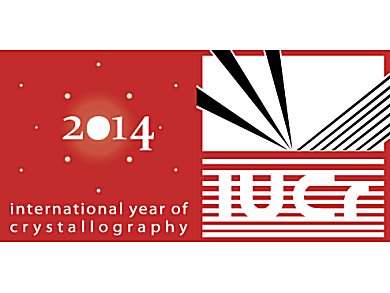
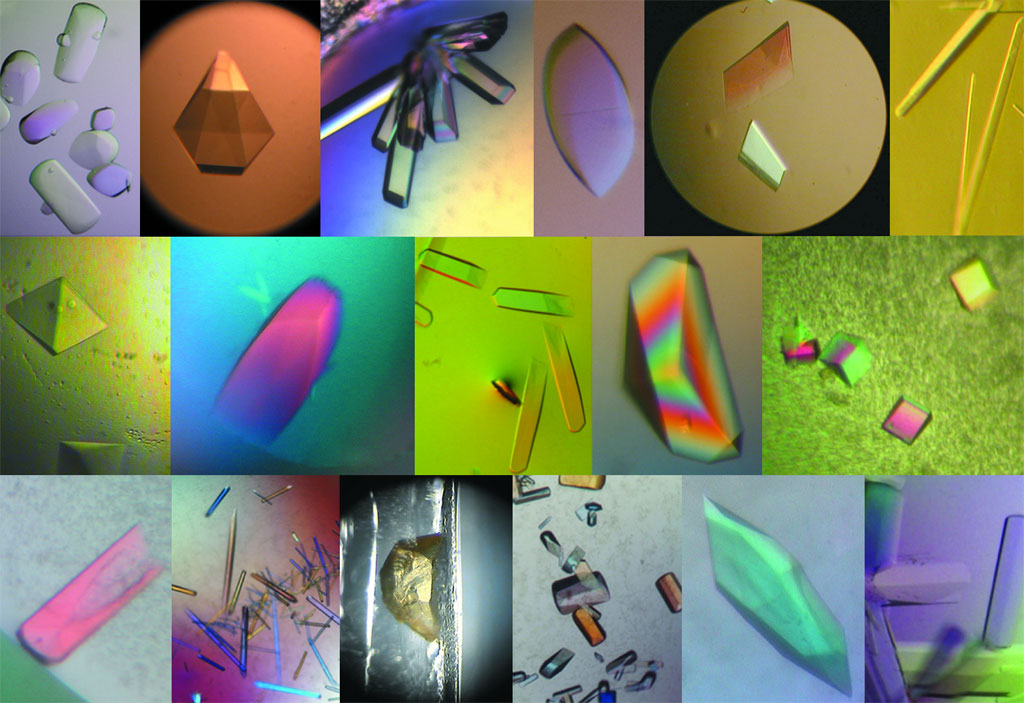
The UN Educational, Scientific and Cultural Organization (UNESCO) on 27-Jan-2014, the International Year of Crystallography will be formally launched.
The science studies the composition and structure of crystals. In the early 20th century, it was discovered that X-rays could be used to ‘see’ the structure of matter in a non-intrusive manner, allowing study of the arrangement of atoms in solids and the chemical bonds that draw one atom to another.
It is at the very core of revealing the structure of DNA, fabricating computer memories and designing potent new drugs, but only a tiny fraction of the world’s people are aware of the science of crystallography, a knowledge gap the United Nations hopes to help erase this year.As such, a crystal growing competition will be open to secondary school students all over the world.
* IYCr 2014 site Home Page of IYCr 2014 
* UN news UN to raise awareness of little-known science behind DNA 
* IYCr Competition IYCr2014 crystal-growing competition for schools 
 Hot Topics - Chemical View: 19-Dec-2013
Hot Topics - Chemical View: 19-Dec-2013
Aspartame declared safe

Two hundred times sweeter than sugar, aspartame has been used as a synthetic alternative to sugar in thousands of food products including fizzy drinks, chewing gum and snacks for 30 years. But several studies published in the past few years have suggested that consumption of aspartame and its breakdown products – namely phenylalanine, methanol and aspartic acid – could be harmful and have been linked with cancer and premature births.
European Food Safety Authority (EFSA) compiled an independent group of experts to review all available scientific research on aspartame and its breakdown products, including both animal and human studies. To ensure all points of view were considered, EFSA also issued an open public call for all data and comments or concerns on aspartame. The EFSA panel specifically stated that aspartame does not cause cancer and at the levels consumed in the human diet, aspartame does not cause any problems during pregnancy. The panel also assessed how much people are eating based on dietary records and maximum use levels allowed in foods.
the panel of experts concluded that aspartame is safe for consumption at current levels of exposure. The current acceptable daily intake (ADI) is 40mg/kg of body weight per day. A typical diet fizzy drink contains 180mg of aspartame. This means the average UK woman would need to drink 15 cans of a diet soft drink to exceed the ADI.
* ChemistryWorld Controversial sweetener declared safe 
 Hot Topics - Chemical View: 23-Feb-2013
Hot Topics - Chemical View: 23-Feb-2013
HKUST team - Championship Again in 24th HK Chem Olym
Hong Kong Chemistry Olympiad is an annual competition organised by the Hong Kong Chemical Society and the Royal Society of Chemistry to promote students' interest in Chemistry. Teams from six tertiary institutions had to work out the best solutions to given some chemistry problems.
The roles of innovation- and knowledge-based industry is undeniably important in Hong Kong's economy. Modern chemistry knowledge and technology certainly contributes to modernisation of herbal medicine industry. HK has the strength in its rich experiences in trading and merchandising traditional Chinese herbal medicine. If it is combined with the world-standard chemistry-related technology in drug development, quality assurance systems, advanced analytical chemistry and certification system, the synergism so-created is unimaginable.
With the exellent performance of our representatives, Nelson, Hwon & Ilona (from left to right respectively) together with the supports from our peer students, the HKUST team once again showed their team spirit amongst undergraduate students and finally got hold of the medals. On this Saturday, the Guest of Honour was the renowned synthetic chemist Prof. Henry N. C. WONG.
 Hot Topics - Chemical View: 2-Dec-2012
Hot Topics - Chemical View: 2-Dec-2012
化學洗頭水 愈洗愈頭痕?

早前有機構調查指出,不少皮膚護理和美容化妝產品含有有害化學 成分,可導致接觸性皮膚炎,嚴重的,更可干擾內分泌。我們使用的洗頭水,同樣 含有不少化學物質。如長年累月使用,有機會誘發敏感不適,包括頭皮痕癢、油脂失衡,甚至脫髮。
因此,要精明揀選個人護理產品,就先要認清成分,了解每種成分的化學特性。 這樣,才能正確使用個人護理產品,讓這些成分發揮最大的功能。
* 2012 November - NextMagazine, vol.1186 化學洗頭水 愈洗愈頭痕? 
* 頭號健康 化學洗頭水 愈洗愈頭痕 
 Hot Topics - Chemical View: 30-November-2012
Hot Topics - Chemical View: 30-November-2012
Foods cooked at high heat may increase cancer risk
International Agency for Research on Cancer had classified 3-MCPD - named for its chemical name 3-chloropropandiol - as "possibly carcinogenic to humans" because experiments had found it could cause cancer in animals.
Thermally processed foods and refined fats and oils are the most significant sources of 3-MCPD fatty acid esters, as reported by the local Centre for Food Safety. Recent international reports also suggest 3-MCPD is found in a range of food products including French fries, toasted bread, salty crackers and roasted coffee. Higher levels of the substance were found in biscuits, fats and oils, snacks, and Chinese pastry. Breakfast cereal, nuts and seeds were found to contain relatively low levels. It is found that 3-MCPD occurs in foodstuffs either as a free compound or bound to fatty acids. We provide here for the first time the evidence that 3-MCPD occurs in foodstuffs also in the form of esters with higher fatty acids. Esters of 3-MCPD thus represent a new class of food contaminants, a bound form of 3-MCPD, which may be released in vivo by a lipase-catalysed hydrolysis reaction. In many cases their amount exceeds that of the free 3-MCPD.
It is best for us to maintain a well-balanced diet so as to avoid excessive exposure to these chemical contaminants from a small range of food items, especially those treated at high temperatures.
* South China Morning Post, 2012 Nov. "Cancer link to foods cooked at high heat" 
* Blanka SVEJKOVSKÁ et al "Esters of 3-Chloropropane-1,2-Diol in Foodstuffs" Czech J. Food Sci. 2004 
* Chromatographia (2012) 75:1049–1056 "Simultaneous Determination of 2- and 3-Monochloropropan-1,3-diol Esters in Foods by Enzymatic Hydrolysis and GC–MS Detection" 
 Hot Topics - Chemical View: 10-July-2012
Hot Topics - Chemical View: 10-July-2012
Flavour-scalping of wine in Tetrapaks and plastic packages
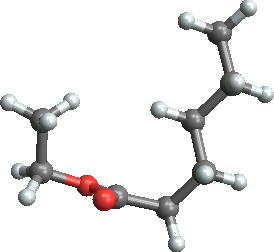
Hong Kong is recently positioned as a wine distribution and trading centre in Southeast Asia. Most red wine and white wines are sold in glass bottles. However, in a local Government's press release (March, 2011), Hong Kong's Secretary for the Environment indicated that on average about 255 tonnes of waste glass containers were disposed of at landfills in Hong Kong daily in 2009. Waste glass bottle reduction or recycling should be seriously considered. Replacing glass bottles by tetrapaks might be one of the good ideas to ease the pressure for opening more landfill sites. Chemists will say that it is not simply replacing the glass bottles with boxes. We need to carefully look into the interactions between wine products and their packaging material.
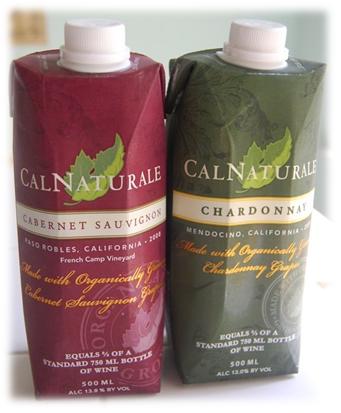
Recently, a French research team mixed two ethyl esters and two alcohols into an acidified ethanol solution to create a simple model for wine. The aroma compounds such as ethyl butyrate, ethyl hexanoate, phenylethyl alcohol, 4-ethylphenol are selected in this study. These compounds were quickly absorbed by the polyethylene film, or permeated through it. Ethyl hexanoate, as the most non-polar molecule, had a particularly strong affinity for the non-polar polyethylene – after five days, a quarter of the ethyl hexanoate had been scavenged by the film. This study can help understanding the evolution of the aromatic profile of wine and could be useful in predicting the shelf life for wine-in-a-box products.
* A Peyches-Bach et al, J. Agric. Food Chem., 2012 June, DOI: 10.1021/jf300648y 
* HKTDC: Hong Kong should position itself as a Wine Trading And Distribution Centre 
 Hot Topics - Chemical View: 13-Sept-2011
Hot Topics - Chemical View: 13-Sept-2011
'Smart Bomb' by Chemically Modifying Autumn Crocus Extract

A 'smart bomb' drug is derived from colchicine which is a toxic substance isolated from the autumn crocus plants. It is very promising in destroying cancers. The drug is coded 'ICT2588' which would likely soon be ready for the initial phase of further testing. The "Smart Bomb" is developed to 'detonate' and then become active once a targeted tumor is reached.
The best wonder is that ICT2588 will leave all other healthy body cells unharmed and unbothered. During lab testing, the drug proved effective against bowel, breast, prostate and lung cancers in mice. Half the treated mice responded satisfactorily; just one injection of the super drug cured all of their cancers. In addition, the growth of tumour was slowed down drastically in the treated animals. The drug will be activated by using the same enzyme which tumours use to attack nearby cells. When the drug gets fully activated, it destroys the blood vessels pampering the tumour and, hence, cancer cells will die.
 Hot Topics - Chemical View: 11-June-2011
Hot Topics - Chemical View: 11-June-2011
What is DEHP?
DEHP, Di(2-ethylhexyl)phthalate), is a phthalate ester. In fact, it is commonly referred to as DOP in most parts of the world. This substance is a colorless, odorless liquid and is often used as plasticizers, allowing increase in the flexibility in plastic products such as sofa or car-seat upholstery, rubber tubes and toys. According to the International Organization for Research on Cancer (IARC) classification, DEHP is a potential carcinogen. DEHP is not easy to be broken down biologically and so it may cause accumulation inside human body.
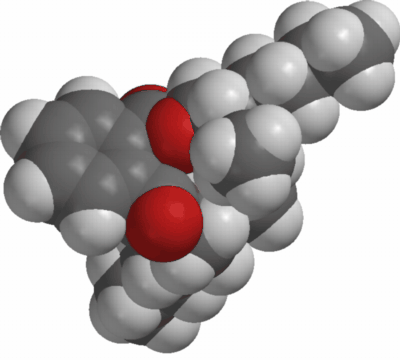
Currently, detection and quantitation of DEHP cannot be judged from only general inspection on finished products and must go through laboratory tests to confirm if they are really contaminated. Common methods for chemical analysis of DEHP is either liquid chromatograph / tandem mass spectrometry (LC /MS/MS) or gas chromatography /mass spectrometry (GC/MS). Although ultra-violet visible absorption spectrometric detecters are often coupled to liquid chromatograph, it is still commonly considered as having low substance-specificity for DEHP.
 Hot Topics - Chemical View: 28-Feb-2011
Hot Topics - Chemical View: 28-Feb-2011
HKUST team soar high again in International Year of Chemistry HK 2011

2011 is a special year – it is International Year of Chemistry (IYC) celebrating the 100th anniversary of getting a Nobel Prize in Chemistry by Marie Curie. The theme of IYC2011 is "Chemistry–our life, our future," and focuses on the “achievements of chemistry and its contributions to the well-being of humankind.” It aims to raise awareness of chemistry among the general public and to attract young people into the field, as well as to highlight the role of chemistry in solving global problems.
Last Saturday is the opening ceremony for a series of activities for celebrating IYC2011 in Hong Kong. There was also the announcement of the results in 22nd HK Chemistry Olympiad competition for tertiary institutes in this ceremony. Once again, the HKUST team seized the 1st runner-up in the competition.
 Hot Topics - Chemical View: 5-Dec-2010
Hot Topics - Chemical View: 5-Dec-2010
Transition Metal Catalysed Cross-coupling ?! An Organic Synthesis Strategy!
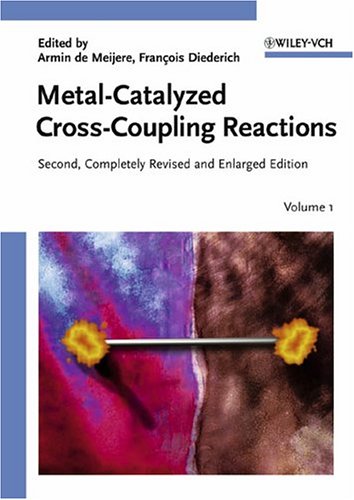
The Royal Swedish Academy of Sciences has awarded the Nobel Prize in Chemistry for 2010 to Richard F. Heck, Ei-ichi Negishi and Akira Suzuki for developing new ways of linking carbon atoms together that has allowed scientists to make medicines and better electronics.
Based on some basic phenomenon in organometallic chemistry and understanding the theory of oxidative addition and reductive elimination, these chemists make the most out of the organic synthetic strategy - transition metal catalysed cross coupling! I've also been a practising chemist of these reactions while I'm persuing my Ph D degree!
 Hot Topics - Chemical View: 16-Sept-2010
Hot Topics - Chemical View: 16-Sept-2010
Possibly New Light on Effective Treatment for Malaria
Medicines for Malaria Venture (MMV) and collaborators discover a novel antimalarial drug candidate on September 3, 2010.
Published in Science journal, it is demonstrated that a compound called NITD609, belonging to spiroindolone compound class, is effective against the blood stage of the two most prevalent strains of the malaria parasite. Through a novel mechanism, NITD609 rapidly cleared Plasmodium (P. falciparum and P. vivax, the 2 deadly strains of malaria parasites) in a malaria mouse model and shows pharmacological properties compatible with a once-daily dosing regimen.
Organic synthesis of this class of compound is straight forward - by acid-catalysed condensation of isatins with trytophanols. Nonetheless, diastereoselectivity has be to taken into account in deciding the optimal synthetic strategy.
* MMV, Novartis and partners discover novel antimalarial drug candidate 
* Spirotetrahydro β-Carbolines: Synthesis & Property 
* Novel antimalarial drug candidate 
 Hot Topics - Chemical View: 16-Oct-2009
Hot Topics - Chemical View: 16-Oct-2009
2009 Nobel laureate: Purity of Optical Fiber Important
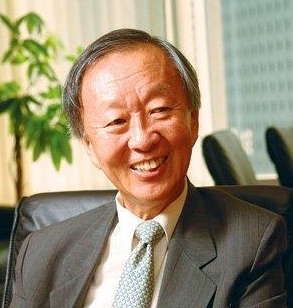
Dr. Charles Kao, former Vice-Chanceller of The Chinese U of HK, is the father of optical fiber/broadband. Thanks to his pioneering work with fiber optics in the 1960s, which revolutionized global communication. On 6-Oct-2009, the Royal Swedish Academy of Sciences recognized his achievements by awarding him the 2009 Nobel Prize in physics.
Kao pointed out that the high purity of fused silica (SiO2) made it an ideal candidate for optical communication. Kao also stated that the impurity of glass material is the main cause for the dramatic decay of light transmission inside glass fiber, rather than fundamental physical effects such as scattering. To reach high purity silica for optical fibers. In order to meet the stringent requirement for optical communications, chemists developed various manufacturing methods for producing high purity optical fibers. Most of these methods evolved from principles of chemical vapor deposition (CVD) such as Outside Vapor Deposition (OVD) & Modified Chemical Vapor Deposition (MCVD, inside vapor deposition), based on gas-phase chemical reactions such as: SiCl4 + O2 -> SiO2 + 2Cl2
* 2009 Nobel Prize for Physics 
 Hot Topics - Chemical View: 23-Sept-2009
Hot Topics - Chemical View: 23-Sept-2009
HK Enjoys Clear Advantages on 6 Priority Industries
Task Force on Economic Challenge led by the Chief Executive Mr Donald Tsang has identified six priority industries where Hong Kong enjoys clear advantages for focused study and further development. These industries are: educational services; medical services; testing and certification; innovation and technology; cultural and creative industries; and environmental industries.
Undeniably 5 out of 6 of these economic areas require human resources with professionalism in Chemistry. Mr Tsang pointed out that these industries are all knowledge-based. He remarked that at least three things are needed to develop them - talent, market and Hong Kong's brand name. Hong Kong needs to attract talent from around the world and to look for customers all over the world. Hong Kong's brand name embodies professionalism, integrity, judicial independence, efficiency, a free and clean society and free flow of information, drawing customers from around the globe. Hong Kong is ready, and the industries are ready, to reap new benefits arising from the new economic environment. The new measures will give fresh impetus to economic activities in these areas, and they will bring new business opportunities for overseas and local investors alike.
* Hong Kong Digest - HK Economic & Trade Office 
 Hot Topics - Chemical View: 15-Aug-2009
Hot Topics - Chemical View: 15-Aug-2009
The Blue Food Dyes in M&M could help spinal cord injuries?
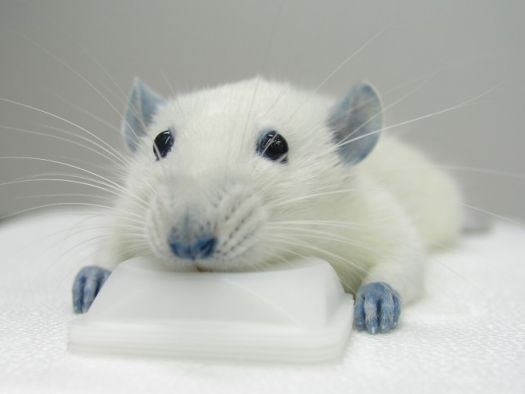
The same blue food dye found in M&Ms and Gatorade could be used to reduce damage caused by spine injuries, offering a better chance of recovery, according to new research. The only side effect was that the treated mice temporarily turned blue. Back in 2004, Scientists discovered that the spinal cord was rich in a molecule called P2X7, which is also known as "the death receptor" for its ability to allow sudden influx of ATP (triggered by a primary injury to spinal cord) to latch onto motor neurons and send the signals which eventually kill them. Scientists knew that the blue food dye molecule (BBG) could block the function of P2X7. The rats given BBG immediately after their injury could walk again with a limp. Those that didn't receive a dose never regained their mobility. Currently there was no standard treatment for patients with spinal injury when they reach the hospital emergency room. Hopefully this work will lead to a practical, safe agent that can be given to patients shortly after injury, for the purpose of decreasing the secondary damage in spinal cord.
* Popsci - The Blue Dye in M&Ms Cures Spinal Injuries? 
 Hot Topics - Chemical View: 21-Feb-2009
Hot Topics - Chemical View: 21-Feb-2009
HKUST team 1st runner-up in 20th Chem Olympiad

In the 20th Hong Kong Chemistry Olympiad for tertiary institution held last Saturday, the HKUST team won the 1st runner-up. With the nice and competent performance of our representatives, Berto, Tony & Jenny (from left to right respectively) together with the supports from our peer students, the HKUST team once again shows their team spirit amongst undergraduate students and finally got hold of the tropy cup from the hands of the Guest-of-honour Dr Terrence Wan.
 Hot Topics - Chemical View: 25-Feb-2008
Hot Topics - Chemical View: 25-Feb-2008
HKUST team 2nd runner-up in Chem Olympiad

In the 19th Hong Kong Chemistry Olympiad for tertiary institution held last Saturday, the HKUST team won the 2nd runner-up. With the nice and competent performance of our representatives, Lawrence, Cyrus and Jason, together with the supports from our peer students, the HKUST team once again shows their team spirit amongst undergraduate students and finally got hold of the tropy cup from the hands of the Guest-of-honour Professor Marcel Lie.

Hong Kong Chemistry Olympiad for tertiary institution is an annual event which is jointly organized by Hong Kong Chemical Society and Royal Society of Chemistry. This is an important event for undergraduate students in local tertiary institutions. In this competition, undergraduate student participants were given a chemistry problem shortly before the competition and they have to find out the solution. They will report the findings to a panel of judges afterwards. On last Saturday, the Guest of Honour is the renowned oil and lipid chemist Prof. Marcel S. F. Lie Ken Jie.
 Hot Topics - Chemical View: 15-Jan-2006
Hot Topics - Chemical View: 15-Jan-2006
科大化學系開發 新藥治瘧疾 非洲童有救

瘧疾是傳染病, 雖在發達國家的病例已甚少,
但在發展中國家仍是殺手病。 科技大學化學系教授Richard Haynes(韓利強)領導一群年青學者,
攜手在本港開發了新藥「![]() (Artemisone )」,
這種藥可以提供很好的療效,
也沒有現時青蒿素藥物帶有的神經毒性,
它的推出將是全球數以百萬計瘧疾病人的喜訊。
(Artemisone )」,
這種藥可以提供很好的療效,
也沒有現時青蒿素藥物帶有的神經毒性,
它的推出將是全球數以百萬計瘧疾病人的喜訊。
現時, 全球每年有一至二百萬人死於瘧疾, 主要為非洲兒童。 事實上, 每三十秒, 就有一個非洲小孩不幸死於瘧疾。
自七十年代起, 「青蒿素」及其衍生物被廣泛用作治療瘧疾開始, 這種藥研製自由青蒿植物的抽取成分, 治瘉了無數的瘧疾病人。 雖然青蒿素很有效, 但青蒿素衍生物與瘧原蟲細胞產生作用的途徑, 一直未被破解。 科大化學系教授Richard Haynes 多年前提出了一個新的藥效理論解釋, 最近被海外的學者證實是正確的, 終於破解了這個謎團。 「青蒿素類化合物是針對瘧原蟲細胞一個特定區域產生的作用, 截斷細胞的鈣離子供應, 細胞便無法調節生長。 」 這個發現增進了科學家對青蒿素類化合物的認識。
七年前, 在這個研究基礎上, 進而開發了名為「![]() 」的新藥。
這隻新藥是真真正正「香港製造」。
」的新藥。
這隻新藥是真真正正「香港製造」。
這種新藥, 可以減少被新陳代謝而分解,
也沒有現時青蒿素藥物帶有的神經毒性。 ![]() 已通過全部臨床測試的篩檢程序,
臨測試的結果, 也顯示
已通過全部臨床測試的篩檢程序,
臨測試的結果, 也顯示![]() 的治療率非常高。
「今年在泰國曾經有一百位病人試用過, 他們全部治瘉了,
而且沒有發現任何副作用, 兼且劑量只是傳統藥物的一半。
」
的治療率非常高。
「今年在泰國曾經有一百位病人試用過, 他們全部治瘉了,
而且沒有發現任何副作用, 兼且劑量只是傳統藥物的一半。
」
開發這種新藥, 迄今已用了約一千七百萬至一千九百萬。 現時, 科大與德國著名藥商拜耳集團(Bayer AG)聯合開發這種新藥。
![]() 將會在全球多個國家和地區例如非洲
印度等地進行更廣泛的臨床實驗, 這種臨床實驗是整個過程中最昂貴的,
當所有數據收集回來, 沒有問題便可以註冊。
由於程序所需, 這種新藥,
可能要再等幾年才可以「正式面世」。
將會在全球多個國家和地區例如非洲
印度等地進行更廣泛的臨床實驗, 這種臨床實驗是整個過程中最昂貴的,
當所有數據收集回來, 沒有問題便可以註冊。
由於程序所需, 這種新藥,
可能要再等幾年才可以「正式面世」。
* News clipping: Sing Tao Daily - Daily Magazine
2005-12-31 
Hot Topics - Chemical View: 10-August-2004
青蒿在外國發揚光大

據《紐約時報》報道,聯合國轄下世界衛生機構今年五月份緊急訂購一億劑由青蒿提煉出來的「青蒿素」(artemisinin),協助對抗在第三世界肆虐的瘧疾。
青蒿常用於外感、暑熱病症,但很少單獨以青蒿煲水,多配合其他中藥服用,例如最著名是青蒿鱉甲湯。中國軍方在1965年全球首次提煉出青蒿素,作為治瘧新藥。中國民間數千年前就懂得使用青蒿治療瘧疾,這古老藥方在70年代一次考古挖掘時,被發現記載於一座西漢王子墳墓(長沙馬王堆漢墓)的石碑上;在明朝李時珍《本草綱目》中也有青蒿治瘧疾的記載。中國早在60年代已成功提煉青蒿素,並於90年代確證它能有效治療瘧疾,但作為聯合國主要捐款國的美英等西方國家,一直質疑青蒿素「沒有科學根據」而反對採用,經過多年爭議,青蒿素終於獲得聯合國轄下世界衛生機構的廣泛認同,成為首選的抗瘧疾藥。
90年代初期越南爆發瘧疾,青蒿素曾有效將瘧疾死亡率大減97%,證實其特效。以往,金雞納霜(chloroquine)是治療瘧疾的主要藥物,但近年瘧原蟲對它和多種舊藥都產生了抗藥性,青蒿素卻仍能保持強大效力,而且青蒿素沒有明顯副作用,能助病人迅速退燒和降低血液中的瘧原蟲水平,有效防止疫症擴散。
新成立的「全球對抗愛滋、肺結核和瘧疾基金」,已向11個國家提供撥款購買青蒿素,並通知另外34個原本訂購金雞納霜等抗瘧舊藥的國家,改訂現被列作治療瘧疾首選的青蒿素。該會估計未來5年該國將花4.5億美元購買新藥。
* 抗瘧疾中藥
聯國購1億劑 中國60年代煉製青蒿素 英美曾指「不科學」
Hot Topics - Chemical View: 13-March-2004
什 麼 是 馬 兜 鈴 酸? What is Aristolochic acid ?
馬兜鈴酸最初是從中藥馬兜鈴中提取出來的一種芳香族有機酸,因此定名為馬兜鈴酸。
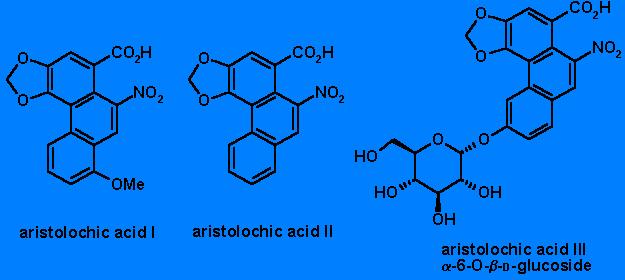
馬兜鈴其實是馬兜鈴科植物馬兜鈴( Aristolochia debilis SIEB. et ZUCC.)或同屬近緣植物之乾燥 果實。分布於華北、華中、華南各地;同屬近緣植物亦供藥用,其中北馬兜鈴(A. contorta BUNGE.)外形十分類似馬兜鈴。分布塞北、東北、華北各地。 馬兜鈴除含豐富馬兜鈴酸外,還含有木蘭花鹼( Magnoflorine ),馬兜鈴酮(Aristolenone)等成分。
中醫常用於清肺熱,降氣平喘,化痰止咳的方劑中配伍。主治痰嗽喘促,肺熱咳血。
香港衛生署最近追查一宗疑因長期服中草藥致馬兜鈴酸中毒的腎衰竭和尿道癌個案時,首次發現批發商誤將含有馬兜鈴 酸的另一種中草藥「尋骨風」,當作抗癌中草藥「白英」出售,由於兩草藥的別名同為「白毛藤」, 容易使人混淆,衛生署經已呼籲市民停用兩藥,並要求批發和零售商暫停供應。
身兼中醫藥管理委員會委員的中醫師公會會長關之義解釋,由於白英及尋骨風的莖部都長有白絨毛,故均 有白毛藤這別稱,但白英主治抗癌,不含馬兜鈴酸,尋骨風則治風濕,含馬兜鈴酸,長期服用會傷腎,導致 腎衰竭和尿道癌。
含馬兜鈴酸的中藥引起的問題,不可不察。已從老鼠身上的實驗發現,馬兜鈴酸是很強的致癌物,比利時 曾有減肥中心誤用含馬兜鈴酸的廣防己替顧客減肥,使超過100人患急性腎衰竭,部分人更在數年後患尿道癌,顯 示它可引起泌尿系統細胞的DNA變異。如要服用關木通、廣防己、土防己及青木香等含馬兜鈴酸的中藥,須先問中醫。
因此,台灣衛生署於2003年11月已經禁止多種含有馬兜鈴、天仙藤、青木香、廣防杞、關木通等中藥材的中成藥出售。
* Properties
of Aristolochis debilis Sieb. 
Hot Topics - Chemical View: 3-April-2003
W h a t i s R i b a v i r i n ?
Recently the outbreak of atypical pneumonia or Severe Acute Respiratory Syndrome (SARS) has been alleviated by the combined use of a steroidal anti-inflammatory drug and ribavirin. So, what is the magic behind ribavirin?
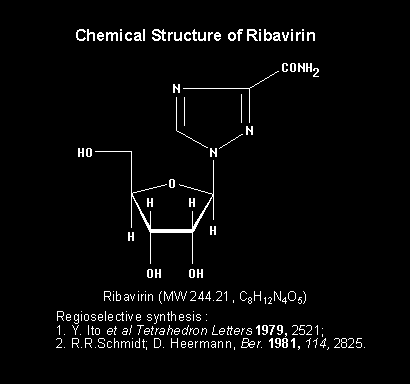
Ribavirin was one of the first antiviral drugs ever discovered. It is an antiviral agent, also known as virazole or 'Rebetol'. Ribavirin has a broad spectrum of antiviral activity in vitro, where it inhibits replication of RSV, influenza, parainfluenza, adenovirus, measles, Lassa fever, and Hantaan viruses.
It is mainly used for the treatment of :
1. Hepatitis C (in combination with interferon) Interferon plus ribavirin for chronic hepatitis C. Med Lett Drugs Ther. 1999 Jun 4;41(1054):53-4;
2. Respiratory Syncytial Virus (RSV) infection in infants;
3. Acute Hemorrhagic Fever caused by arenavirus (Lassa Fever, AHF, BHF, VHF) or Bunyaviridae (e.g. Hantavirus, Rift Valley Fever);
4. Severe Influenza infections.
Ribavirin (1-beta-D-ribafuranosyl-1,2,4-triazole-3-carboxamide) is a synthetic nucleoside analogue. It appears to interfere with the expression of messenger RNA and inhibit viral protein synthesis. It also stimulates the T cells in the body to fight the virus. It is administered orally and its most frequent adverse effect is haemolysis, moderate in most cases.
* The broad-spectrum antiviral ribonucleoside ribavirin is an RNA virus mutagen 
Hot Topics - Chemical View: 13-January-2003
University is Planning for a Fuel-cell Project
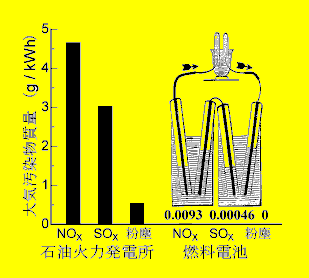
One of a Japanese university (山梨大學) will launch a five-year project in the academic year starting in April to develop efficient and low-priced fuel cells for automobiles, the first serious effort by a Japanese university to develop fuel cells in collaboration with private industry, including automobile and electric machinery manufacturers..
Fuel cells, which power motors by generating electricity through a reaction between oxygen and hydrogen, produce no harmful emissions such as carbon dioxide or nitrogen oxides, substances that contribute to air pollution. They also are being considered as new sources of energy for other purposes.
Toyota Motor Corp. and Honda Motor Co. leased five fuel-cell cars to the Japan central government late last year, becoming the world's first automakers to put such vehicles on the market. But the monthly cost to lease the vehicles is 1.2 million yen and 800,000 yen, respectively. For these cars to win wider acceptance, this cost must be reduced.
Since current fuel-cell engines are vulnerable to high temperature and require a large cooling system, the university aims to develop new materials that would have a higher tolerance for heat.
Currently, platinum is used for the electric terminals of fuel cells. The university's research center will also explore the possibility of combining platinum with other metals for use on electric terminals in an effort to reduce costs.
Hiroshi Ito, vice president of the university, said: "We are certain to enter the era of hydrogen energy in the near future. We want to gather experts in that area for the new project, which has great potential."
Hot Topics - Chemical View: 17-October-2002
The Nobel Prize in Chemistry 2002
The Royal Swedish Academy of Sciences has decided to award
the Nobel Prize in Chemistry for 2002
John B. Fenn (Virginia Commonwealth University, Richmond, USA), Koichi Tanaka (Shimadzu Corp., Kyoto, Japan) and Kurt Wuethrich (Swiss Federal Institute of Technology (ETH), Zuerich, Switzerland and The Scripps Research Institute, La Jolla, USA)
”for the development of methods for identification and structure analyses of biological macromolecules”
”for their development of soft desorption ionisation methods for mass spectrometric analyses of biological macromolecules”
”for his development of nuclear magnetic resonance spectroscopy for determining the three-dimensional structure of biological macromolecules in solution”.
They Made Revolutionary Analytical Techniques for Biomolecules
This year’s Nobel Prize in Chemistry concerns powerful analytical methods for studying biological macromolecules, such as peptides and proteins. Analysis of protein structure and functions has led to increased understanding of the life processes. Researchers can now rapidly and simply reveal what different proteins a sample contains. They can also determine three-dimensional pictures showing what protein molecules look like in solution and can then understand their function in the cell. The methods have revolutionised the development of new pharmaceuticals. Promising applications are also being reported in other areas, for example foodstuff control and early diagnosis of breast cancer and prostate cancer.
Mass spectrometry is a very important analytical method used in practically all chemistry laboratories the world over. Previously only fairly small molecules could be identified, but Fenn and Tanaka have developed methods that make it possible to analyse biological macromolecules as well.
John B. Fenn developed a new ionisation method in 1988, so-called electrospray ionisation (ESI), in which charged droplets of protein solution are produced which shrink as the water evaporates. Eventually free protein ions remain. Their masses may be determined by setting them in motion and measuring their time of flight over a known distance. At the same time Koichi Tanaka introduced a different technique for causing the proteins to hover freely, soft laser desorption. A laserpulse hits the sample, which is “blasted” into small bits so that the molecules are released.
The other half of the Prize rewards the further development of another favourite method among chemists, nuclear magnetic resonance. NMR gives information on the three-dimensional structure and dynamics of the molecules. Through his work at the beginning of the 1980s Wuethrich has made it possible to use NMR on proteins. He developed a general method of systematically assigning certain fixed points in the protein molecule, and also a principle for determining the distances between these. Using the distances, he was able to calculate the three-dimensional structure of the protein. The advantage of NMR is that proteins can be studied in solution, i.e. an environment similar to that in the living cell.

Hot Topics - Chemical View: 24-May-2002
最近代糖成為了傳媒的焦點,大家都擔心代糖食壞腦、壞眼。吃砂糖又怕肥。如何是好? 哪一種代糖最好、最健康呢?
甜菊糖![]() (Stevioside/Stevia)
(Stevioside/Stevia)
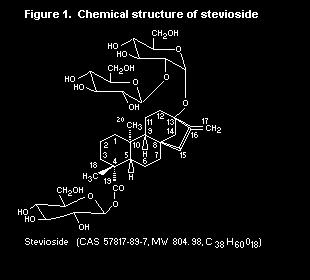
來自拉丁美洲的草本植物甜甘菊(Stevia Rebaudiana),原土著叫 Honey leaf。哥倫布未來到美洲前,當地土著早已用它作為加甜劑。在南美洲,這是種用了幾百年的食物,他們都認為很安全。情形就像我們中國人用中草藥一般。 近年南美諸國及日本、南韓、中國等地大量使用它,單是日本人在一九八七年就吃了七百公噸(以後相信更多)。目前它的主要種植產地是巴拉圭、巴西、日本、中國,不過美國、加拿大、英國也有人種了出來。 中國大陸、台灣譯作甜葉菊,亦有蜜葉糖之譯名。南美洲人用了最少幾百年,現在美國、日本、中國大陸都有出產。據日本大學研究發現,蜜葉糖甜味是蔗糖三百倍,不引起蛀牙,反抑制細菌滋長。即使是低血症和糖尿病病患者,在食用蜜葉糖後都不引起血糖波動,是很理想的天然甜味品。 健康食品店中,有甜甘菊原粉、甜甘菊原液。也有把甜甘菊中的主要甜味成份Stevioside分隔出來,雖較甜,但不及前者天然、完整。另,部份國貨公司、藥房、日式超級市場有國內出產的茶包裝。
據日本一家大學的牙醫學院研究,指這種甜菊糖![]() 能抑制口腔細菌滋生;另有臨床研究發現,此甜菊糖
能抑制口腔細菌滋生;另有臨床研究發現,此甜菊糖![]() 不引起血糖波動,適合有低血糖症、糖尿病病人服用。
在美國,這東西未被列為合法,原因是美國食品及藥物管理局(FDA)未有充份的『毒理研究』,足夠証實其安全性。
不引起血糖波動,適合有低血糖症、糖尿病病人服用。
在美國,這東西未被列為合法,原因是美國食品及藥物管理局(FDA)未有充份的『毒理研究』,足夠証實其安全性。
甜菊糖![]() 是否致癌?
有關詳情,可參考世界衛生組織(WHO)之安全性評估報告:
是否致癌?
有關詳情,可參考世界衛生組織(WHO)之安全性評估報告: WHO
REPORT 1
WHO
REPORT 1
![]() Comments please email to: Dennis
H W Chan
Comments please email to: Dennis
H W Chan